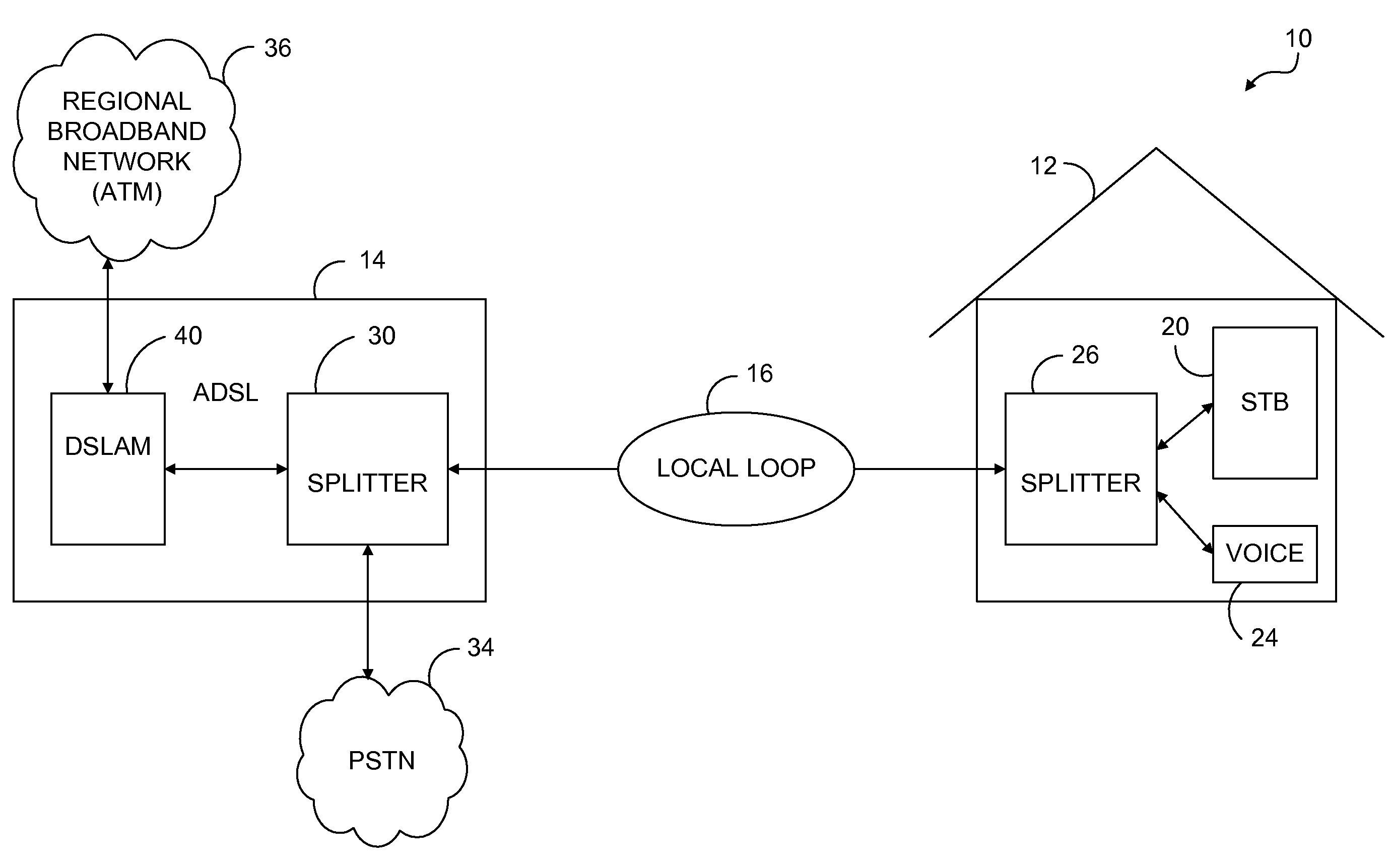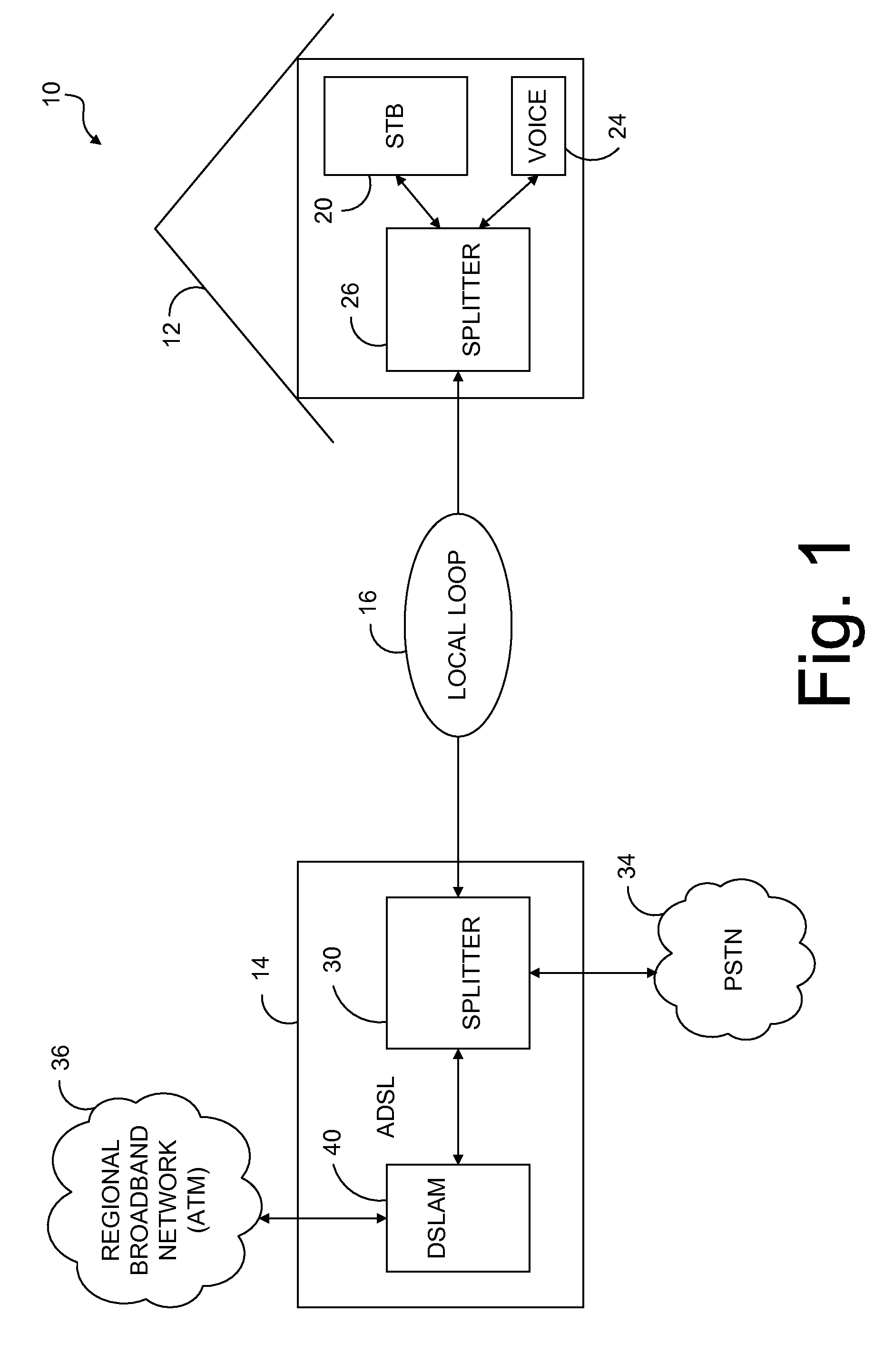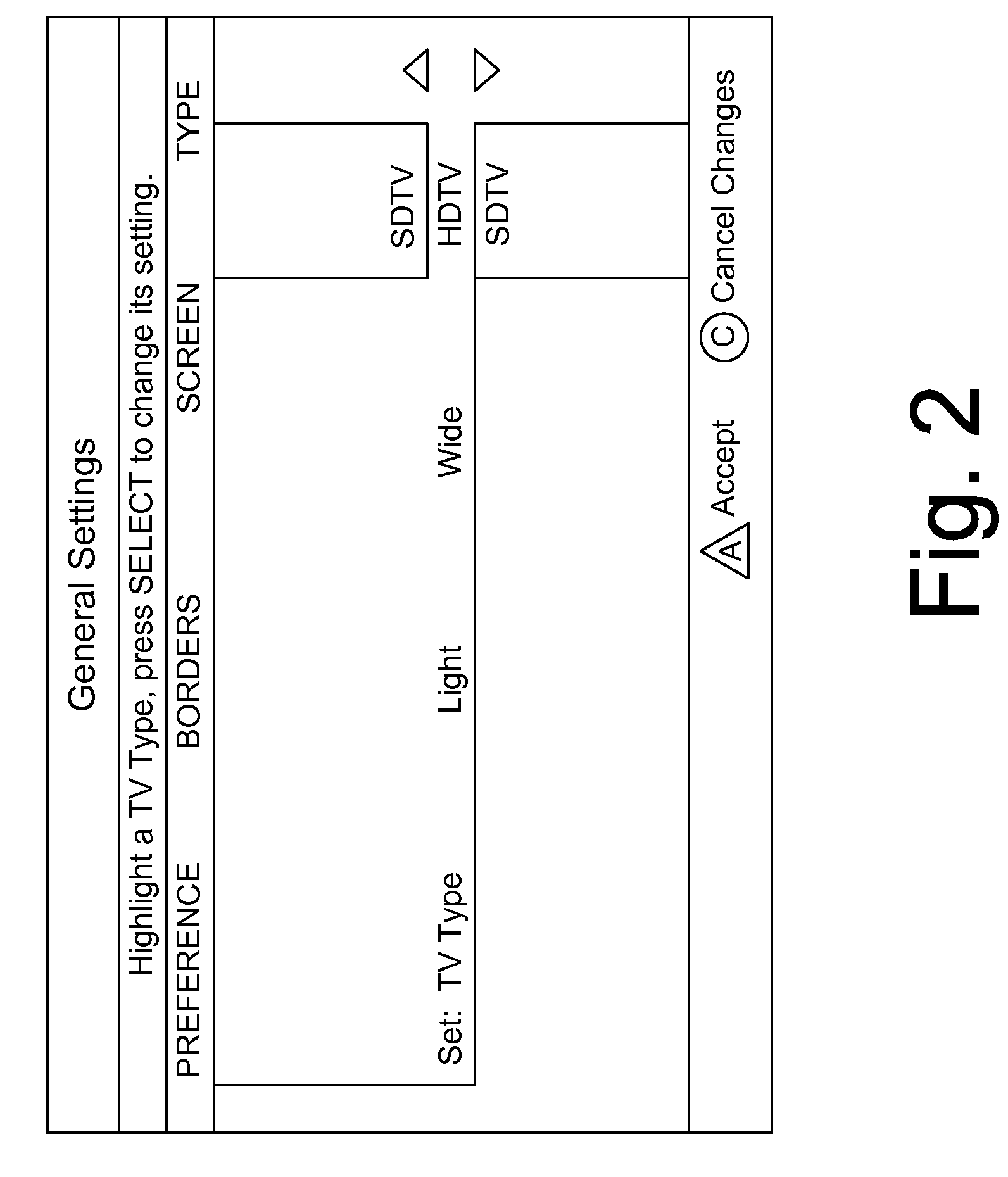Providing Video Content to a Subscriber While Minimizing Transmission Channel Capacity
a technology of video content and transmission channel capacity, applied in the field of ip television and bandwidth management, can solve the problems of inability to provide bandwidth to users, inability to reduce bitrate, and inability to always be suitable for alternativ
- Summary
- Abstract
- Description
- Claims
- Application Information
AI Technical Summary
Benefits of technology
Problems solved by technology
Method used
Image
Examples
first embodiment
[0034]In a first embodiment, according to the characteristic or set of characteristics of a first display device coupled to a first STB 20, a first instance of a first video program is transmitted to the first STB 20. The first instance of the first video program exhibits one or more compression characteristics corresponding to one or more characteristics of the first display device. In particular, the compression characteristics of the first instance of the first video program are such that the spatial picture resolution, picture rate, or picture scan format, or any combination thereof, are modified from their corresponding original form at the time the video was created or imaged, in order to reduce the amount of information that must be compressed and transmitted to STB 20. The result is that the first instance of the first video program exhibits an increased amount of compression, or, equivalently, a lower bit-rate in its real-time transmission. However, the amount of modificati...
second embodiment
[0046]In a second embodiment, a first display device is coupled to a first STB 20 and a second display device is coupled to a second STB 20 (not shown). The first STB 20 is coupled to a first loop 16 and second STB 20 is coupled to a second loop 16. A first request for the first video program (e.g., effected by a television channel change or as a movie purchase) is generated from the first STB 20 and a second request for the first video program is generated from the second STB 20. Responsive to the first request for the first video program, a first instance of the first video program is transmitted to the first STB 20 and responsive to the second request for the first video program, a second instance of the first video program is transmitted to the second STB 20, the compression characteristics of the first instance of the first video program in compressed form being different than the compression characteristics of the second instance of the first video program in compressed form. ...
third embodiment
[0047]In a third embodiment, the first and second instance of the first video program in compressed form differ only when transmitting the first video program, or any portions thereof, simultaneously in real-time to the first STB 20 and the second STB 20.
PUM
 Login to View More
Login to View More Abstract
Description
Claims
Application Information
 Login to View More
Login to View More - R&D
- Intellectual Property
- Life Sciences
- Materials
- Tech Scout
- Unparalleled Data Quality
- Higher Quality Content
- 60% Fewer Hallucinations
Browse by: Latest US Patents, China's latest patents, Technical Efficacy Thesaurus, Application Domain, Technology Topic, Popular Technical Reports.
© 2025 PatSnap. All rights reserved.Legal|Privacy policy|Modern Slavery Act Transparency Statement|Sitemap|About US| Contact US: help@patsnap.com



